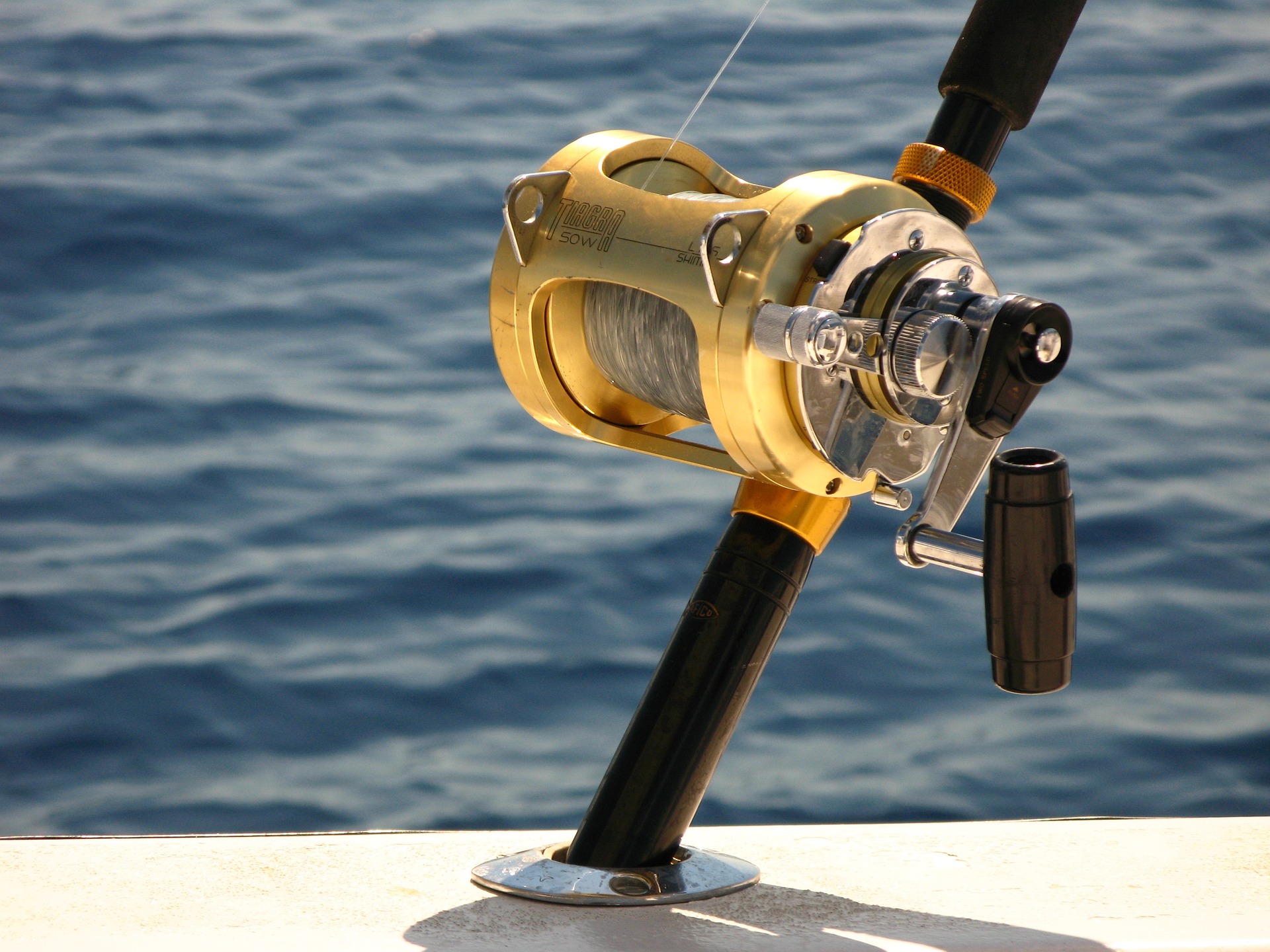The Importance of Cleaning a Fishing Reel
Cleaning a fishing reel is an essential step in maintaining the longevity and performance of the equipment. Over time, dirt, grime, and salt can build up on the reel, causing wear and tear and hindering its ability to function properly. Neglecting to clean a fishing reel can lead to costly repairs and even render the reel useless.
Benefits of a Well-Maintained Reel
A well-maintained fishing reel will perform better and last longer. Regular cleaning and maintenance will ensure that the reel is free of corrosion, dirt, and grime, and that all moving parts are lubricated and functioning properly. This will result in improved cast accuracy and smoother line retrieval, making your fishing experience more enjoyable.
The Cleaning Process
The cleaning process for a fishing reel involves disassembling the reel, cleaning its various parts, lubricating moving components, reassembling the reel, and properly storing it. This guide will provide step-by-step instructions and tips for each stage of the process.
Tools and Supplies Needed
- Soft cloth or paper towels – To clean the reel components and dry them off.
- Dish soap – To clean the reel components and remove dirt and grime.
- Freshwater – To rinse the reel components after cleaning.
- Lubricant – To lubricate the moving parts of the reel.
- Screwdrivers – To disassemble the reel.
- Pliers – To grip and remove small components.
- Small brush – To scrub away dirt and grime.
- Clean workspace – Necessary to prevent the loss of small parts during disassembly and reassembly.
Disassembling the Reel
- Remove the spool from the reel body.
- Remove the handle by unscrewing the screws that secure it in place.
- Remove the side plates by unscrewing the screws that hold them in place.
- Remove the spool shaft and any other internal components.
Tips for Organizing Parts During Disassembly
- Label each component as you remove it to ensure proper reassembly.
- Place each component in a separate tray or container to prevent them from getting lost or mixed up.
Cleaning the Reel
Cleaning a fishing reel requires attention to detail and patience. Start by wiping down the exterior with a damp cloth to remove any surface dirt and grime. Next, use a brush and a mild cleaning solution to clean the interior components, such as the spool, the gears, and the handle. Make sure to scrub in all crevices and remove any dirt or debris. Finally, dry all parts thoroughly before lubricating.
Tips for Removing Dirt and Grime
If you’re having trouble removing dirt and grime, try using a toothbrush or a soft-bristled brush. Additionally, you can try soaking the parts in a cleaning solution for a few minutes before scrubbing. Avoid using harsh chemicals, as these can damage the reel’s components.
Lubricating and Moving Parts
Once all parts are clean and dry, apply a light lubricant to the moving parts, such as the gears, the handle, and the spool. Make sure to use a lubricant that is specifically designed for fishing reels and follow the manufacturer’s instructions. Too much lubricant can attract dirt and debris, so be sure to use just enough to keep the parts moving smoothly.
Reassembling the Reel
Reassembling the reel is simply a matter of reversing the disassembly process. Start by placing the handle back into its socket, followed by the spool, the gears, and any other components you removed. Make sure to tighten any screws or bolts to the appropriate torque and check that everything is secure before moving on to the next step.
Tips for Proper Reassembly
Before reassembling, take the time to examine all parts and ensure they are free of damage. Make sure to replace any parts that are worn or damaged. Pay close attention to the orientation of each component and make sure they are properly aligned before reassembling. Also, keep track of any screws or bolts that you removed, as you will need to replace them in the same order during reassembly.
How to Test The Reel After Reassembling
Once the reel is reassembled, it’s important to test it to ensure it’s functioning properly. Attach the reel to a fishing rod and test the handle, the spool, and the drag system to make sure everything is working smoothly. If everything checks out, you’re ready to hit the water!
Maintenance and Storage
To keep your fishing reel in good condition, it’s important to maintain it regularly. This includes cleaning and lubricating the reel after each use, checking for wear and tear, and storing it properly when not in use. Regular maintenance will ensure the longevity of your fishing reel and keep it functioning smoothly.
Tips for Storing The Reel to Ensure Longevity
To store your fishing reel, make sure it’s clean and dry. Store it in a dry, cool place, away from direct sunlight and moisture. If possible, store the reel in its original packaging or in a protective case to prevent damage. Avoid stacking heavy items on top of the reel, as this can cause damage.
How to Spot Signs of Wear and Tear
It’s important to keep an eye out for signs of wear and tear on your fishing reel. This includes any cracks or chips in the body, worn or damaged gears, and any other signs of damage. If you notice any issues, address them immediately to prevent further damage and keep your reel in premier shape.
Summary of The Cleaning Process
Cleaning a fishing reel is an essential step in ensuring that your equipment lasts for many fishing trips to come. The process starts with gathering the necessary tools and supplies, which include a cleaning solution, lubricant, and brushes. Then, the reel is disassembled and each part is cleaned, paying special attention to the removal of dirt and grime. After cleaning, each part is lubricated to ensure smooth operation. Finally, the reel is reassembled, tested, and stored in a manner that extends its lifespan.
Final Thoughts on the Importance of Maintaining Fishing Reels
A well-maintained fishing reel is key to having a successful and enjoyable fishing experience. Regular cleaning and upkeep help to prevent problems such as line tangles, decreased casting distance, and an overall decrease in performance. Taking the time to clean and maintain your fishing reel will pay off in the long run, ensuring that your gear lasts for many fishing trips to come.
Fishing gear is a significant investment, and cleaning and maintaining it regularly is a simple way to extend its lifespan and keep it in top condition. Whether you are a seasoned fisherman or a beginner, make sure to set aside time to clean and maintain your fishing reel. Not only will it improve your fishing experience, but it will also help you to avoid costly repairs or replacements in the future. So, grab your cleaning supplies and get started on maintaining your fishing reel today!
FAQs
Should you wash your fishing reel?
Yes, it is important to clean your fishing reel regularly to keep it working smoothly and extend its lifespan. Over time, dirt, salt, and other debris can build up on the reel’s exterior and interior parts, which can cause it to become sluggish or even fail completely. To clean your fishing reel, you will need a soft-bristled brush, reel oil, reel grease, and a clean rag. Simply disassemble the reel, clean it thoroughly, apply oil and grease to the moving parts, reassemble it, and wipe it down with a clean rag. By following these steps, you can help ensure that your fishing reel stays in good condition and performs optimally every time you use it.
Can you wash your fishing reel with water?
While it is important to clean your fishing reel regularly, you should avoid using water to wash it. Water can cause damage to the reel’s interior parts, such as the bearings and gears, by rusting or corroding them. Instead, you should use a soft-bristled brush to remove any dirt, sand, or debris that may be stuck in the reel’s crevices. After cleaning, apply a small amount of reel oil and grease to lubricate the moving parts of the reel. By following these steps, you can keep your fishing reel clean and in good working condition without risking damage from water exposure.
What is the best solvent for cleaning fishing reels?
When it comes to cleaning your fishing reel, it is important to choose the right solvent to avoid damaging the reel’s delicate parts. Isopropyl alcohol is a popular choice for cleaning fishing reels because it is effective at removing dirt and grime, while also evaporating quickly without leaving any residue. Another option is naphtha, which is a petroleum-based solvent that is also effective at removing dirt and debris from the reel’s parts. However, it is important to use naphtha in a well-ventilated area to avoid inhaling any fumes. Ultimately, the best solvent for cleaning your fishing reel depends on the type of reel and the level of dirt and grime buildup. Always check the manufacturer’s instructions before using any solvent on your fishing reel, and be sure to use it carefully and sparingly to avoid damaging the reel’s delicate parts.








